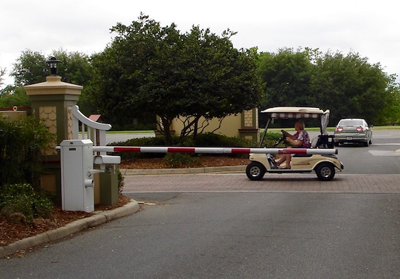Small Vehicles in the Age of Climate Change and Other Calamities
Small Vehicle Resource, the firm of which I am a Managing Director, has just published its 10th major, biennial market study of what we call the small, task-oriented vehicle (STOV) industry. It comes at a time when there is a national health crisis, intense concerns over climate change, and significant technological changes affecting the way we get from point A to point B.
Unprecedented factors coming together to shape future markets
The market study is entitled, The Small Task-Oriented Vehicle Market Meets Urban/Suburban Mobility – Trends from 2016, the Outlook to 2025. The study projects significant gains in the market for personal transportation vehicles and light-duty over the next five years, as the golf market, while important loses ground in relative market size. The study analyzes the historical confluence of three major factors that are and will be underpinning the market for small vehicles as we go forward:
- Climate policies, including zero emissions objectives, COVID-19 effects, and new technologies, usher in the urban/suburban mobility (USM) market and underpin an expanding consumer market for personal transportation vehicles, as well as commercial markets for light duty utility vehicles;
- The on-going transition from lead acid to lithium batteries will have a major positive impact, raising vehicle performance levels and augmenting vehicle longevity and recycling value;
- The maturing off-road utility and recreational UTV market remains fundamentally strong and highly competitive, and is poised to follow the automobile market and golf-car type vehicles into electrification—either because of market demands or tightened restrictions of ICE-powered vehicles.
If you are interest in further information and details on this market study, please contact smetzger@smallvehicleresource.com
Emergence of the “dispersed living lifestyle”
Concerns about the current coronavirus pandemic and future pandemics putting urban centers in a bind. High urban density is a potential breeding ground for contagious diseases. At the same time public officials in urban centers are setting goals for zero emissions; that is, essentially, no more automobiles. Exceptions would be made for electric vehicles, but a conventional-sized electric vehicle presents yet another problem; namely, congestion. Thus, city transportation commissions have been, up to now, hyping mass transit. And that, again, raises the issue of contagion.
So, what is the answer? The answer lies in a compelling demographic shift, enabled by a much broader application of technology. Together they bring about a new lifestyle, involving some things familiar and some things radically different. We, in the SVR market study call it the adaptation to a dispersed living lifestyle, characterized as:
- Dispersed, largely self-contained residential and business locations in clustered environments, much resembling today’s gated community—with extensions to integrate schools, healthcare, entertainment, and other services;
- Increasing use of interactive teleconferencing technology, enabling a vast expansion of remotely accessed office procedures and methods of problem-solving.
The first element addresses the three issues of contagion, congestion, and pollution. The second makes the first possible. It should be noted that not only will technology enable the virtual office environment, as well as educational services, but will have an immense impact on the factory assembly line, as well as distribution and sales. The ability to remotely and robotically control the flow of product along the assembly line now extends to quality control, inventory processes, warehousing, and as noted, the whole process of distribution and sales.
Stage is set for the urban/suburban mobility (USM) vehicle
Given these changes, as described above, it is quite likely that small, electric vehicles will emerge as a clear alternative to a conventional-sized on-road vehicle. Moreover, light duty utility vehicles have a market opportunity in last-mile delivery systems. PTVs, already showing a significant increase in market acceptance and market growth would find a natural fit in the USM market, although it would take a shift in marketing strategy, as well as vehicle modifications (see below) to take advantage of the opportunity.
New directions for PTV product development
So, what would be an ideal urban vehicle, and how would it differ from today’s, that is, your persona transportation vehicle (PTV)? First, lets give credit to the positive attributes of the current PTV models. All of us enjoy the openness of the typical PTV. Easy entry and easy exit, wind in your face and the bracing sense of the out of doors. Obviously, it would be good to retain these features for fair weather driving.
But what about inclement weather? Here is where modifications of the typical PTV begin. The powersports folks, Polaris in particular, may be a leader in this regard. The Polaris XP1000 can be totally enclosed with hard doors, which can be removed for open air riding. Of course, this is a work vehicle and not what we would classify as a PTV. Yet, it has the weatherized feature of total enclosure and also has a vehicle interconnectivity option as well.
PTVs sport a growing number of automotive features with audio systems, Bluetooth, stylized dashes with LCD panel displays already in the mix. Aside from hard and stylish enclosures today’s PTV is ready for a launch into the future, and it is certainly hoped, in this corner, that management of the Big Three will respond.
If not, there a numerous start-ups that could ultimately lead the way.
Contact the Author: Steve Metzger at smetzger@smallvehicleresource.com. Or check out our website at www.smallvehicleresource.com, where you will find an extensive database of vehicle models and can make side-by-side comparisons of vehicles based on a full set of specifications.


